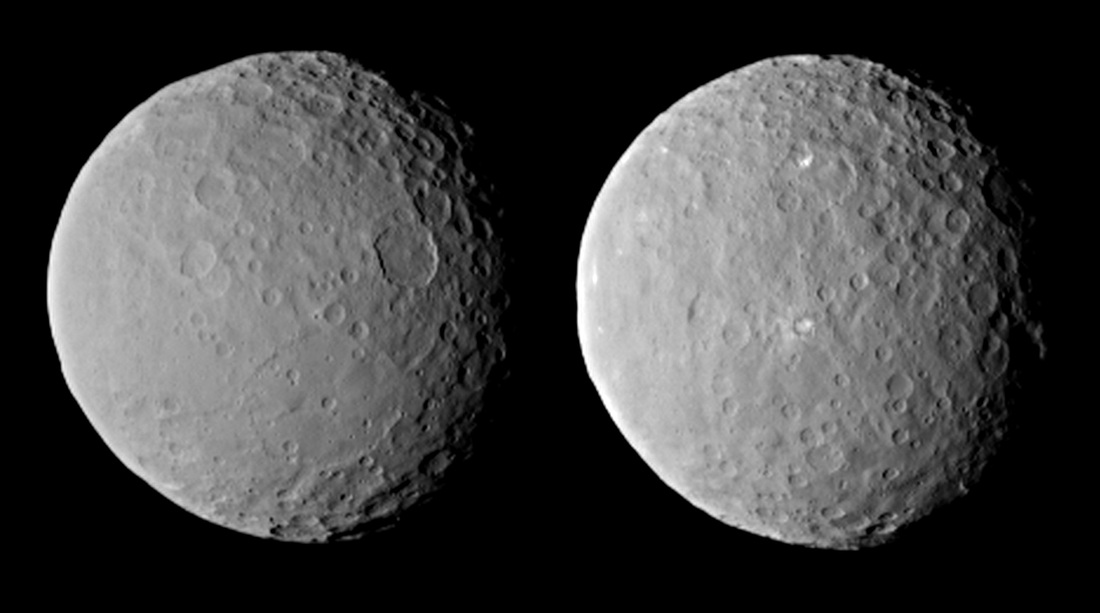Dwarf planet Ceres continues to puzzle scientists as NASA's Dawn spacecraft gets closer to being captured into orbit around the object. The latest images from Dawn, taken nearly 29,000 miles (46,000 kilometers) from Ceres, reveal that a bright spot that stands out in previous images lies close to yet another bright area. These images of dwarf planet Ceres, processed to enhance clarity, were taken on Feb. 19, 2015, from a distance of about 29,000 miles (46,000 kilometers), by NASA's Dawn spacecraft. Dawn observed Ceres completing one full rotation, which lasted about nine hours. Catastrophist Jno Cook on relatively recent discharge events in the asteroid belt, shortly after the collapse of the Saturnian Polar Configuration: The battling Gods in the sky started an immediate retreat after 3147 BC, and Saturn and Jupiter eventually moved to their current orbits, although it would take 860 years for Jupiter and may have taken over a thousand years for Saturn and the Titans. As the Gods retreated into the far sky, Jupiter at first continued to bolt objects in the asteroid belt, through which it was moving, as it was receding from the Sun. The displays enter the mythology of the Gods as the magical weapons of the chief God -- the bolt of Zeus that never misses, the hammer of Thor. Click here to read more of Cook's reconstruction . . .
2 Comments
Kristian Birkeland
2/28/2015 11:40:45 am
fascinating. So what you are demonstrating by correlating the asteroid mini-planet Ceres and it's curious white spots (plasma discharges?) with ancient eye-witness accounts of Jupiter's Thunderbolts, is that asteroid belt objects are also electrically active bodies - sometimes, under the right conditions. Is that right?
Reply
2/28/2015 12:15:55 pm
Hi Kristian :)
Reply
Your comment will be posted after it is approved.
Leave a Reply. |

 RSS Feed
RSS Feed